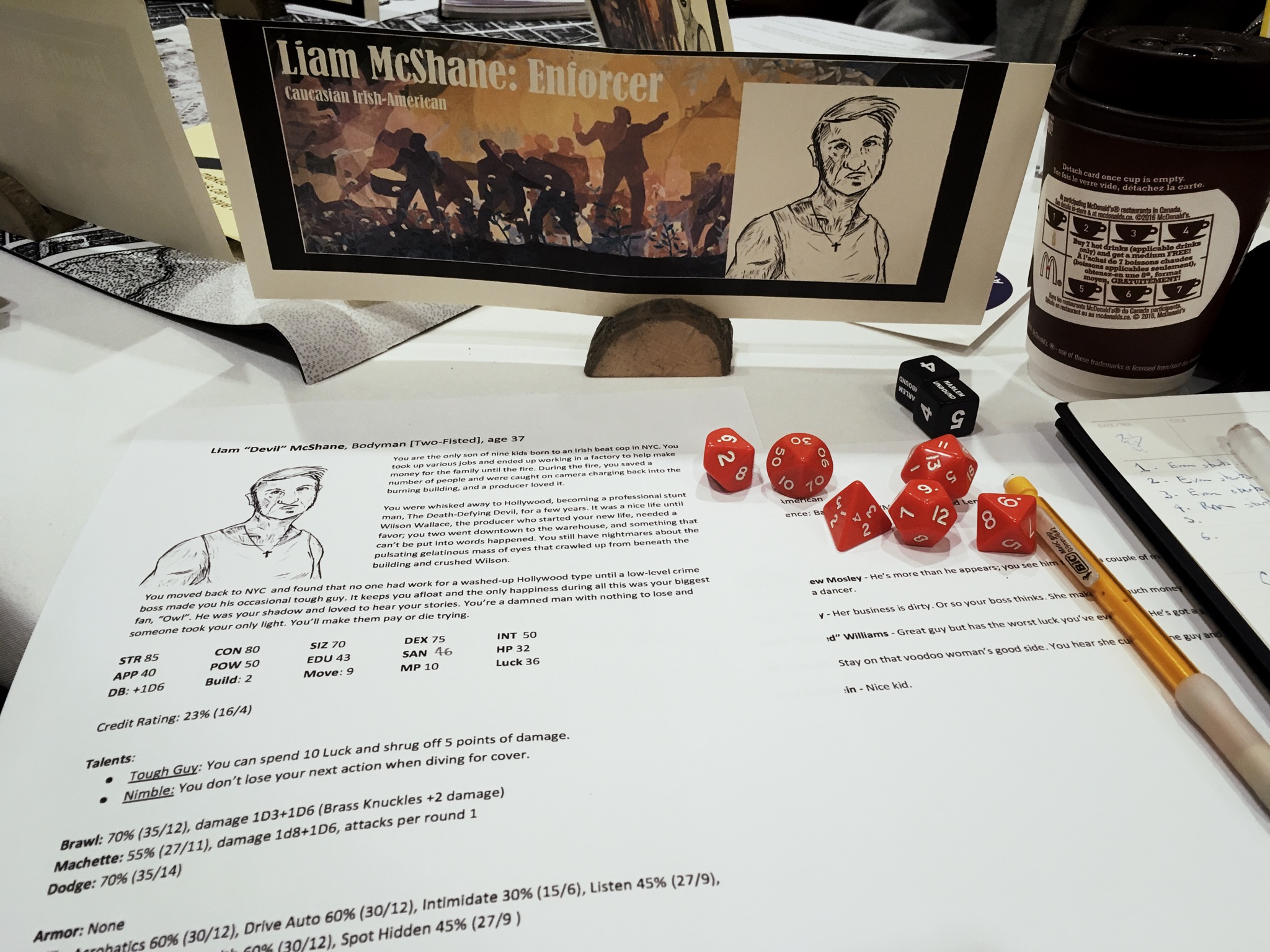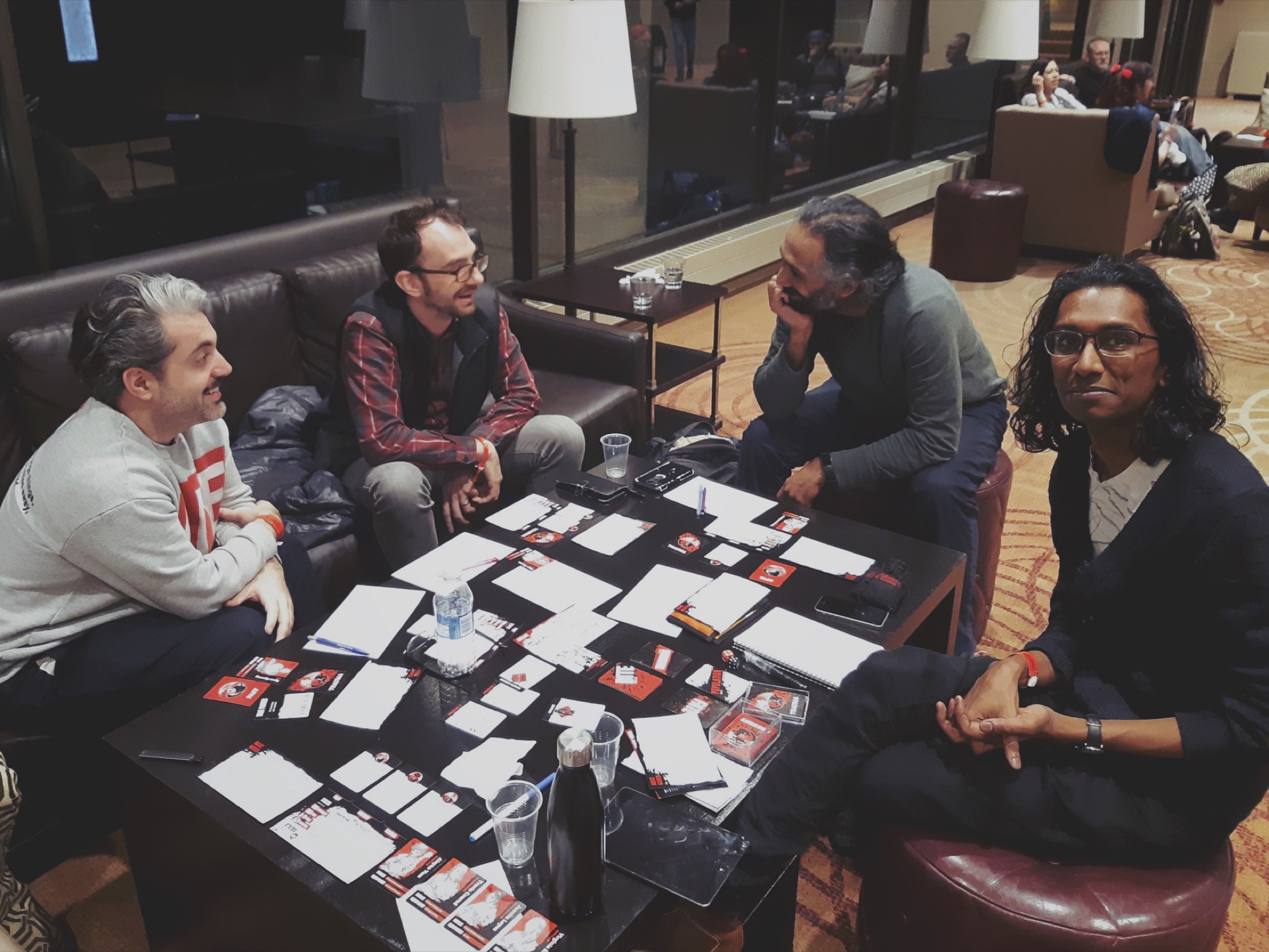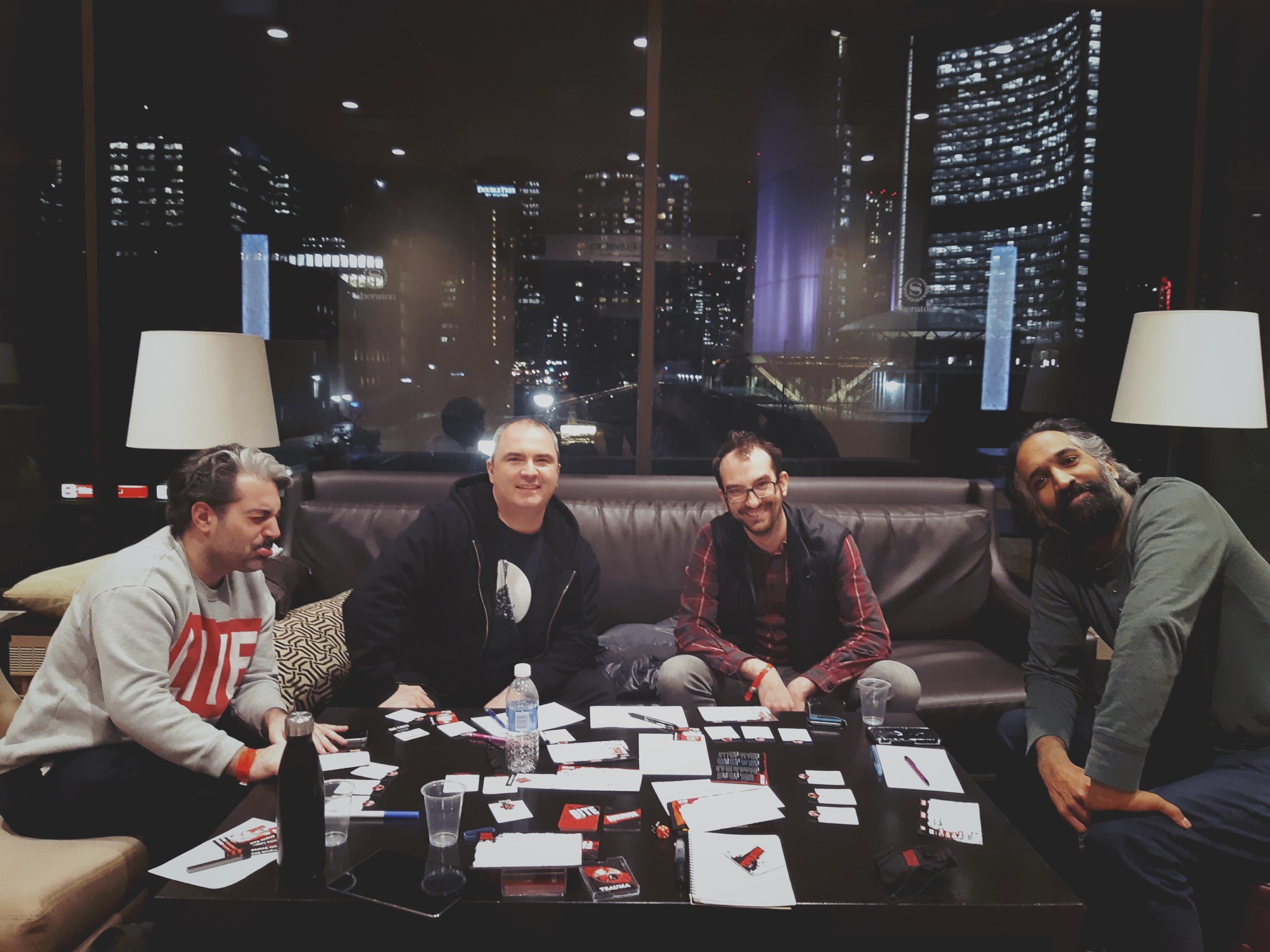Review: Harlem Unbound
by Ramanan Sivaranjan on March 24, 2019
Tagged: cthulhu coc callofcthulhu harlemunbound chrisspivey breakoutcon breakoutcon2019
I don’t recall exactly how it came up, but someone asked if the character we were talking to was White. They weren’t being weird: it was pertinent information. We were playing a game set in 1920s New York, most of our characters were Black, and we were worried about racism. Chris said something to the effect of, “This is Harlem. It’s the twenties. Almost everyone is Black. I’ll tell you when someone is White.”
People: this is what I am here for.1
I’ve never played a Call of Cthulhu game. Lovecraft’s fiction wasn’t something I grew up on, so those sorts of games were never on my mind. But, I do love a lot of other pulp fiction, jazz music, James Baldwin, Richard Wright, and other things that all felt adjacent to the setting of Chris Spivey’s game Harlem Unbound. I also love the idea of a game where everyone goes insane and dies at the end.2 I saw Chris was running a game at Breakout Con and signed right up.
In a strange inversion of my typical reviews I will write about a game I have played, but whose rulebook I haven’t read. So, maybe this is me just telling you about a game I played this one time that was fun.
Harlem Unbound was kickstarted quite successfully in 2017. Chris’s game then spent 2018 winning awards, as far as I can tell. Last Gen Con Chaosium announced they would publish the second edition of the game. Nicely done.
The mechanics of the game were very straightforward. Chris explained them quite quickly before our session got going. Your characters have some percentile attributes, similar to those found in D&D, and some percentile skills. To accomplish tasks you roll under those stats on a d100. If a task is hard, you need to roll under half that stat or skill. There are also advantage/disadvantage mechanics similar to D&D 5e where you roll two Tens dice and pick the best or worst result. All characters have a Luck skill they can use to succeed on rolls in certain situations, but you lose some each time you do so. Finally there is the infamous SAN score for your sanity. When you encounter eldritch horrors you need to roll under your sanity. You’ll take some ‘damage’ to your fragile psyche, which will be a lot or little depending on if you fail or succeed. If you take more than 5 sanity damage at a time, you roll on a special table that tells you what terrible fate befalls you. No one hit 0 sanity—I assume you explode or some such thing. The game we were playing was “pulpier” so our characters had more hit points than your typical Call of Cthulhu character, though we didn’t look to be invincible.
Call of Cthulhu is a game about investigation. There is a mystery the players are trying to solve. In this game we were hired to find out who killed a teenage boy we were all connected to in some way. He was run over by a car in a part of town he shouldn’t have been anywhere near. His sister was a famous singer at a local Harlem nightclub. There were shoot outs, other mysterious deaths, ties to local gangland drama, the mysterious past of our benefactor, and a whole host of other leads that took us around Harlem. As the game progressed we quickly realized things were weirder than they first appeared. The game culminated in the death of the women who had hired us to find her brother’s killer, a few people having nervous break downs, and a terrible spider demon being unleashed on the world. It felt like a very on-brand game of Call of Cthulhu.
A common complaint I have read (and now witnessed) with Call of Cthulhu is that investigation is such a key part of the game, but failing rolls may stymie your progress. The solution here seems to be creating scenarios where there is such a web of relationships between all the action that players will eventually make their way to centre of the mystery, though their route may be quite roundabout. (This actually feels like it may help set up stories that are quite over the top and pulpy: the librarian is also dating the mobster who is also a cultist, etc.) I thought it was fun trying to figure out what was going on. We tracked all our leads on a sheet of paper in the middle of the table, so we wouldn’t forget avenues we might want to explore later. My understanding is in Gumshoe you always are making forward progress: that you can’t “fail” a roll and be blocked in your investigation. I can see the appeal there as well, though the Call of Cthulhu approach does appeal to the OSR part of my brain. Sometimes you just don’t succeed! I liked that there was the occasional dead end.
There are lots of essays about the racism of H.P. Lovecraft. So many that trying to find writing about cosmic horror as an analogy for racism are harder to find. But that writing must exist: it feels so on the nose. Setting a Cthulhu game in 1920s Harlem feels like something someone should have done already. You have gangs, prohibition, jazz bars, and all that excitement. You marry that with the experience of being Black in America at that time3 and I think you have something really compelling.
There is a new edition of Harlem Unbound due soon, and I’ll likely grab it when it comes out. I feel stupid for not backing the Kickstarter at the time, though that was likely the responsible thing to do. The current edition is still available as a PDF, and also includes the rules for running games using the Gumshoe system. If you’re a Call of Cthulhu fan buying this thing feels like a safe bet.

-
An aspect of Luke Cage that I really liked was just how aggressively Black the whole show was. The only characters who were White were those where there being white was thematically interesting: the corrupt cop and the villain Shades. It was cool to see such an inversion of your typical TV show. Mind you, that first season probably should have been several episodes shorter. I digress. Ironically, in this game I picked the White pre-gen. ↩
-
Chris claims this isn’t how all Call of Cthulhu games end. Sure, buddy. ↩
-
Well, and now: we didn’t solve racism, people. ↩


